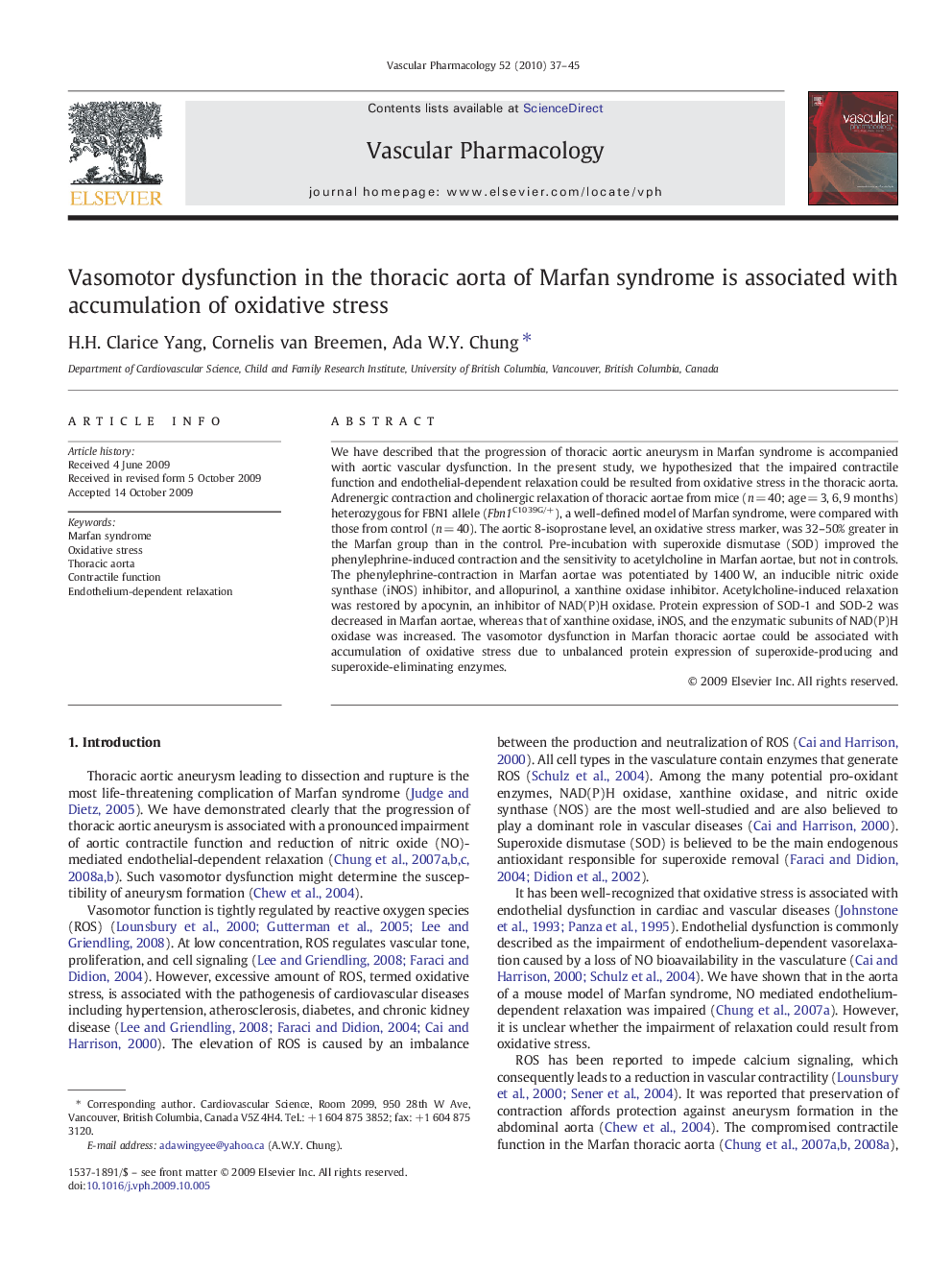| Article ID | Journal | Published Year | Pages | File Type |
|---|---|---|---|---|
| 2574618 | Vascular Pharmacology | 2010 | 9 Pages |
We have described that the progression of thoracic aortic aneurysm in Marfan syndrome is accompanied with aortic vascular dysfunction. In the present study, we hypothesized that the impaired contractile function and endothelial-dependent relaxation could be resulted from oxidative stress in the thoracic aorta. Adrenergic contraction and cholinergic relaxation of thoracic aortae from mice (n = 40; age = 3, 6, 9 months) heterozygous for FBN1 allele (Fbn1C1039G/+), a well-defined model of Marfan syndrome, were compared with those from control (n = 40). The aortic 8-isoprostane level, an oxidative stress marker, was 32–50% greater in the Marfan group than in the control. Pre-incubation with superoxide dismutase (SOD) improved the phenylephrine-induced contraction and the sensitivity to acetylcholine in Marfan aortae, but not in controls. The phenylephrine-contraction in Marfan aortae was potentiated by 1400 W, an inducible nitric oxide synthase (iNOS) inhibitor, and allopurinol, a xanthine oxidase inhibitor. Acetylcholine-induced relaxation was restored by apocynin, an inhibitor of NAD(P)H oxidase. Protein expression of SOD-1 and SOD-2 was decreased in Marfan aortae, whereas that of xanthine oxidase, iNOS, and the enzymatic subunits of NAD(P)H oxidase was increased. The vasomotor dysfunction in Marfan thoracic aortae could be associated with accumulation of oxidative stress due to unbalanced protein expression of superoxide-producing and superoxide-eliminating enzymes.
Graphical abstractFigure optionsDownload full-size imageDownload as PowerPoint slide
